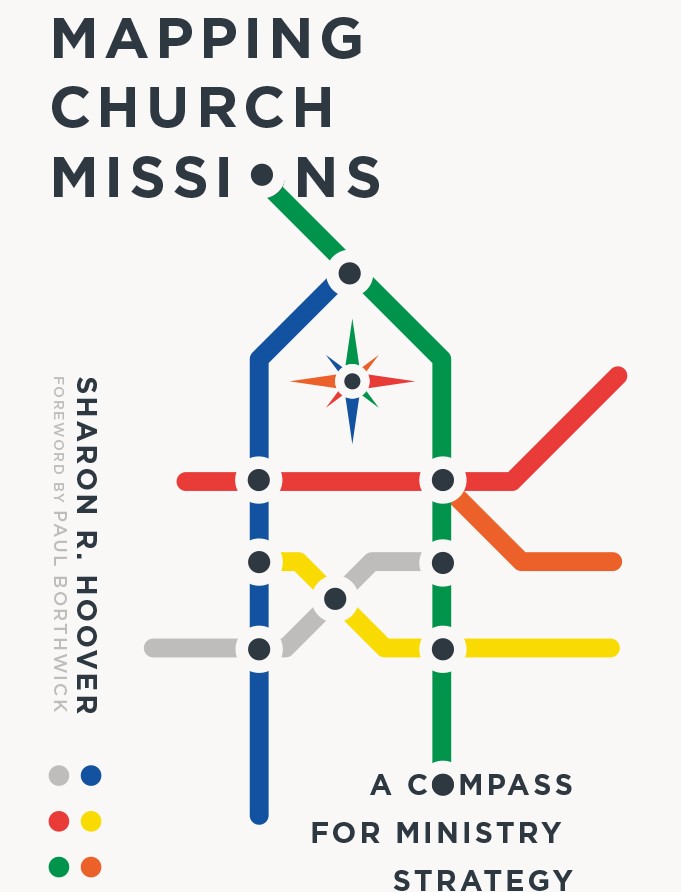 As followers of Christ, we recognize serving and being His witnesses as critical parts of our spiritual journey. Yet we can lose years wandering in the search for the best ways to connect to this mission. So many opportunities exist to explore God’s call and to meet the needs around us, but this pursuit can overwhelm.
As followers of Christ, we recognize serving and being His witnesses as critical parts of our spiritual journey. Yet we can lose years wandering in the search for the best ways to connect to this mission. So many opportunities exist to explore God’s call and to meet the needs around us, but this pursuit can overwhelm.
This is a very interesting time to be a Christian. The global landscape of missions is ever-changing. New expressions of ministry emerge almost daily. Political and cultural dynamics, however, are opening and closing opportunities daily. Add in life’s busyness, our lack of knowledge, and the many persuasive voices around us, then the search for missional engagement becomes so very complicated.
It’s like staring at a compass but still not knowing which way to go.
Mapping Church Missions offers a framework to help navigate the many options. The book walks through seven key issues to guide readers toward an effective and sustainable missions strategy. It equips pastors and church leaders with important foundational knowledge as they plan their church’s missional engagement.
When we learn how God is entering communities around the world, for example, we can rejoice in news ways to connect! Many of us, however, are unaware of the options to encourage these movements of God’s Spirit. One strategic choice often overlooked is partnering with indigenous ministries. Living Bread Ministries is an example of a US-based mission agency whose heart to serve centers on local believers. LBM’s church planting focus is the global poor. Reaching this marginalized population is both a cultural and socio-economic shock too vast for most western missionaries to overcome. For the church or individual who has a heart for these communities, LBM is a ministry to consider. They are effectively working alongside indigenous pastors to fulfill their calling to serve. New families of faith are now thriving in Brazil, Thailand, and anywhere else the Lord leads.
I am hopeful Mapping Church Missions will enable churches and individuals to learn about new ways to serve and to then step toward effective missional engagement. May it affirm and demystify our call to both glorify God and serve others!
–Sharon
Excerpt from Mapping Church Missions:
Witnesses or Wanderers
Amanda put three cans of green beans, toilet paper, and diapers in the food pantry’s collection box in the church lobby. She stopped to talk with an elder, Mike, about coordinating the collection of school supplies for children of impoverished families in the community. After strategizing with Mike about how best to get the word out about the school supplies to a busy congregation, Amanda stopped by the missions table to get a flyer for next summer’s mission trip to Kenya. Just as she left the building, she crossed paths with Megan, who was selling fair-trade jewelry. Amanda’s necklace collection was already overflowing from previous purchases, each supporting women rescued from sex trafficking. But yes, she would come to Megan’s jewelry party next week.
Despite her monthly donations to an international refugee agency and a missionary in Bolivia, Amanda felt guilty as she threw away mail asking for financial donations to cancer research. Television commercials about children with cleft palates caused her to reach for the mute button on the remote control. Web ads and television commercials of dogs in abusive homes added pressure to her overburdened, empathetic heart. After a particularly guilt-ridden week, Amanda wondered whether her actions changed anyone’s life for the better.
I have lost count of the number of people who have told me how similar their missional engagement is to Amanda’s story. This broad approach to kingdom work introduces people to the abundant needs but it does not result in meaningful connection. Despite hoping to make a significant difference, their attention instead moves rapidly from one outreach partner to another.
Are Amanda’s efforts—and those of many people like her—more like serial dating? Kent Annan, codirector of Haiti Partners, likens this missions approach to flirting, bouncing from romance to romance: “When someone behaves this way in his teens or early twenties, we shake our heads and figure he’ll mature. If he keeps flipping through relationships into his thirties and forties, the immaturity starts to look pathological.”[1] Surely the church can find a better way to connect God’s people with the world’s spiritual and physical needs.
Sometimes our congregants may know their passions, but ways to serve according to those passions remain elusive. Ministries beckon from all directions. Amidst the many worthy causes, intentionality is lost. Tragically, the noise crowds out God’s voice. So, instead of serving and giving where the Spirit leads them, our members often serve when the calendar has space and give when the bank account allows.
At any moment in the day, we can look around us and find abundant physical, mental, and spiritual needs. Which way should we step? Toward the friend who struggles with depression? The neighbor who does not know Christ? The man on the corner with the “Will Work for Food” sign? The AIDS orphan in last night’s news story? The three billion people unreached by the gospel message? The new missionary family trying to raise monthly support?
Both congregants and churches alike intend to serve with purpose, but experiences rather than research tend to drive our models for ministry. Friends, agencies, and random emails invite us to join them to influence the world in the name of Jesus Christ. Soon scattered volunteer hours and random impersonal donations form our approach to missions. Each new missions opportunity merely adds to a collection of temporal outings. Our primary role as witnesses for Christ gets buried under the clutter of good intentions.
 Sharon R. Hoover is the Director of Missions at Centreville Presbyterian Church in Centreville, Virginia, where she has served for more than twenty years. Check out her new book, Mapping Church Missions: A Compass for Ministry Strategy, here: https://www.ivpress.com/mapping-church-missions
Sharon R. Hoover is the Director of Missions at Centreville Presbyterian Church in Centreville, Virginia, where she has served for more than twenty years. Check out her new book, Mapping Church Missions: A Compass for Ministry Strategy, here: https://www.ivpress.com/mapping-church-missions
(Excerpt taken from Mapping Church Missions by Sharon R. Hoover. Copyright © 2018 by Sharon R. Hoover. Used by permission of InterVarsity Press, P.O. Box 1400, Downer’s Grove, IL 60515-1426. www.ivpress.com)
[1]Kent Annan, Slow Kingdom Coming: Practices for Doing Justice, Loving Mercy, and Walking Humbly in the World (Downers Grove, IL: InterVarsity Press, 2016), 15-16.

